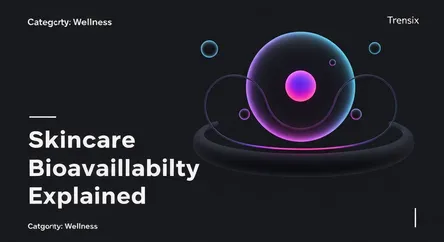Wellness
Skincare Bioavailability Explained

Learn what bioavailability means in skincare and why it's the key to making sure your products actually work and deliver visible results.
What is it?
In skincare, bioavailability refers to the degree and rate at which an active ingredient is absorbed by the skin and becomes available to the target cells where it can be effective. For an ingredient to work, it must first penetrate the skin's protective outer layer, the stratum corneum. Factors like the ingredient's molecular size, the product's formulation, and the delivery system all determine whether an active can reach the deeper layers of the skin or if it simply sits on the surface. High bioavailability means your skin can genuinely use the ingredients.
Why is it trending?
Consumers are becoming more ingredient-savvy and demand products that deliver tangible results, not just promises. There's a growing awareness that the percentage of an active ingredient is less important if it can't be properly absorbed. This has pushed brands to focus on the science of formulation, using advanced delivery systems like liposomes, nanocarriers, and encapsulation to enhance the penetration and effectiveness of ingredients like Vitamin C and retinoids. This focus on efficacy over marketing claims resonates with a desire for smarter, more effective skincare routines.
How does it affect people?
Understanding bioavailability helps you choose products that offer real value and results. It shifts the focus from an impressive ingredient list to a well-formulated product that can effectively deliver those ingredients to your skin cells. This knowledge empowers you to make smarter purchasing decisions, avoiding products where potent actives might go to waste due to poor absorption. By selecting formulas with high bioavailability, you are more likely to see visible improvements in your skin health, ensuring your investment in skincare pays off with a healthier, more radiant complexion.